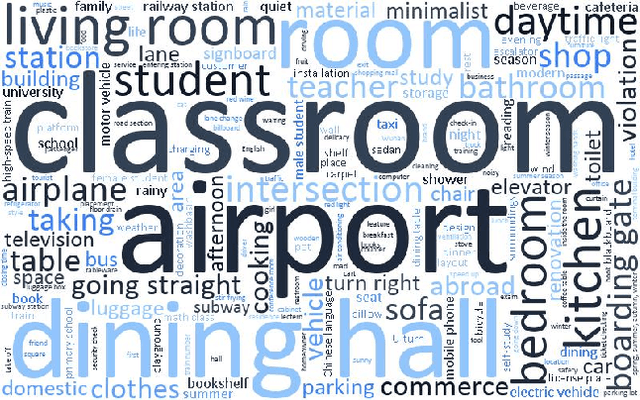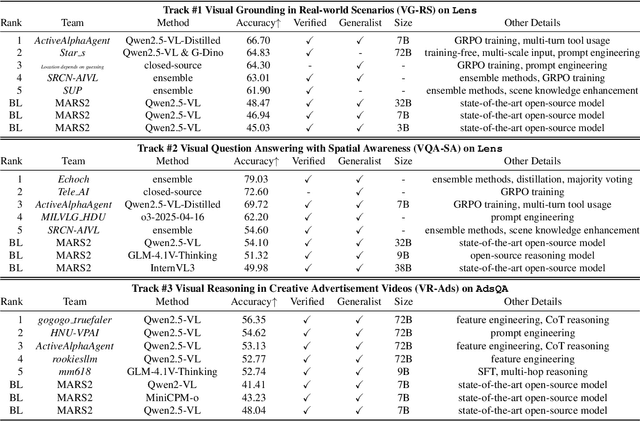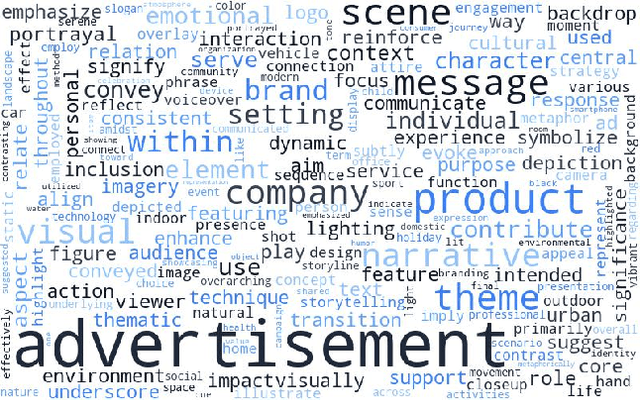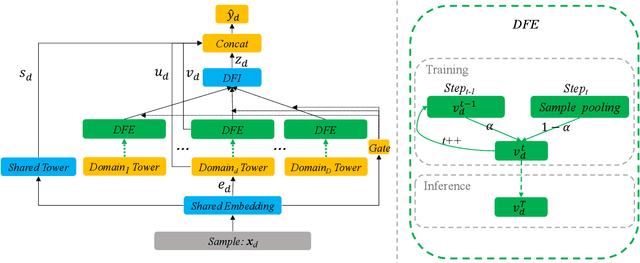Chong Peng
MUSE: MCTS-Driven Red Teaming Framework for Enhanced Multi-Turn Dialogue Safety in Large Language Models
Sep 18, 2025Abstract:As large language models~(LLMs) become widely adopted, ensuring their alignment with human values is crucial to prevent jailbreaks where adversaries manipulate models to produce harmful content. While most defenses target single-turn attacks, real-world usage often involves multi-turn dialogues, exposing models to attacks that exploit conversational context to bypass safety measures. We introduce MUSE, a comprehensive framework tackling multi-turn jailbreaks from both attack and defense angles. For attacks, we propose MUSE-A, a method that uses frame semantics and heuristic tree search to explore diverse semantic trajectories. For defense, we present MUSE-D, a fine-grained safety alignment approach that intervenes early in dialogues to reduce vulnerabilities. Extensive experiments on various models show that MUSE effectively identifies and mitigates multi-turn vulnerabilities. Code is available at \href{https://github.com/yansiyu02/MUSE}{https://github.com/yansiyu02/MUSE}.
MARS2 2025 Challenge on Multimodal Reasoning: Datasets, Methods, Results, Discussion, and Outlook
Sep 17, 2025



Abstract:This paper reviews the MARS2 2025 Challenge on Multimodal Reasoning. We aim to bring together different approaches in multimodal machine learning and LLMs via a large benchmark. We hope it better allows researchers to follow the state-of-the-art in this very dynamic area. Meanwhile, a growing number of testbeds have boosted the evolution of general-purpose large language models. Thus, this year's MARS2 focuses on real-world and specialized scenarios to broaden the multimodal reasoning applications of MLLMs. Our organizing team released two tailored datasets Lens and AdsQA as test sets, which support general reasoning in 12 daily scenarios and domain-specific reasoning in advertisement videos, respectively. We evaluated 40+ baselines that include both generalist MLLMs and task-specific models, and opened up three competition tracks, i.e., Visual Grounding in Real-world Scenarios (VG-RS), Visual Question Answering with Spatial Awareness (VQA-SA), and Visual Reasoning in Creative Advertisement Videos (VR-Ads). Finally, 76 teams from the renowned academic and industrial institutions have registered and 40+ valid submissions (out of 1200+) have been included in our ranking lists. Our datasets, code sets (40+ baselines and 15+ participants' methods), and rankings are publicly available on the MARS2 workshop website and our GitHub organization page https://github.com/mars2workshop/, where our updates and announcements of upcoming events will be continuously provided.
HKD4VLM: A Progressive Hybrid Knowledge Distillation Framework for Robust Multimodal Hallucination and Factuality Detection in VLMs
Jun 16, 2025Abstract:Driven by the rapid progress in vision-language models (VLMs), the responsible behavior of large-scale multimodal models has become a prominent research area, particularly focusing on hallucination detection and factuality checking. In this paper, we present the solution for the two tracks of Responsible AI challenge. Inspirations from the general domain demonstrate that a smaller distilled VLM can often outperform a larger VLM that is directly tuned on downstream tasks, while achieving higher efficiency. We thus jointly tackle two tasks from the perspective of knowledge distillation and propose a progressive hybrid knowledge distillation framework termed HKD4VLM. Specifically, the overall framework can be decomposed into Pyramid-like Progressive Online Distillation and Ternary-Coupled Refinement Distillation, hierarchically moving from coarse-grained knowledge alignment to fine-grained refinement. Besides, we further introduce the mapping shift-enhanced inference and diverse augmentation strategies to enhance model performance and robustness. Extensive experimental results demonstrate the effectiveness of our HKD4VLM. Ablation studies provide insights into the critical design choices driving performance gains.
RollingQ: Reviving the Cooperation Dynamics in Multimodal Transformer
Jun 13, 2025Abstract:Multimodal learning faces challenges in effectively fusing information from diverse modalities, especially when modality quality varies across samples. Dynamic fusion strategies, such as attention mechanism in Transformers, aim to address such challenge by adaptively emphasizing modalities based on the characteristics of input data. However, through amounts of carefully designed experiments, we surprisingly observed that the dynamic adaptability of widely-used self-attention models diminishes. Model tends to prefer one modality regardless of data characteristics. This bias triggers a self-reinforcing cycle that progressively overemphasizes the favored modality, widening the distribution gap in attention keys across modalities and deactivating attention mechanism's dynamic properties. To revive adaptability, we propose a simple yet effective method Rolling Query (RollingQ), which balances attention allocation by rotating the query to break the self-reinforcing cycle and mitigate the key distribution gap. Extensive experiments on various multimodal scenarios validate the effectiveness of RollingQ and the restoration of cooperation dynamics is pivotal for enhancing the broader capabilities of widely deployed multimodal Transformers. The source code is available at https://github.com/GeWu-Lab/RollingQ_ICML2025.
Truth in the Few: High-Value Data Selection for Efficient Multi-Modal Reasoning
Jun 05, 2025Abstract:While multi-modal large language models (MLLMs) have made significant progress in complex reasoning tasks via reinforcement learning, it is commonly believed that extensive training data is necessary for improving multi-modal reasoning ability, inevitably leading to data redundancy and substantial computational costs. However, can smaller high-value datasets match or outperform full corpora for multi-modal reasoning in MLLMs? In this work, we challenge this assumption through a key observation: meaningful multi-modal reasoning is triggered by only a sparse subset of training samples, termed cognitive samples, whereas the majority contribute marginally. Building on this insight, we propose a novel data selection paradigm termed Reasoning Activation Potential (RAP), which identifies cognitive samples by estimating each sample's potential to stimulate genuine multi-modal reasoning by two complementary estimators: 1) Causal Discrepancy Estimator (CDE) based on the potential outcome model principle, eliminates samples that overly rely on language priors by comparing outputs between multi-modal and text-only inputs; 2) Attention Confidence Estimator (ACE), which exploits token-level self-attention to discard samples dominated by irrelevant but over-emphasized tokens in intermediate reasoning stages. Moreover, we introduce a Difficulty-aware Replacement Module (DRM) to substitute trivial instances with cognitively challenging ones, thereby ensuring complexity for robust multi-modal reasoning. Experiments on six datasets show that our RAP method consistently achieves superior performance using only 9.3% of the training data, while reducing computational costs by over 43%. Our code is available at https://github.com/Leo-ssl/RAP.
NTIRE 2025 challenge on Text to Image Generation Model Quality Assessment
May 22, 2025Abstract:This paper reports on the NTIRE 2025 challenge on Text to Image (T2I) generation model quality assessment, which will be held in conjunction with the New Trends in Image Restoration and Enhancement Workshop (NTIRE) at CVPR 2025. The aim of this challenge is to address the fine-grained quality assessment of text-to-image generation models. This challenge evaluates text-to-image models from two aspects: image-text alignment and image structural distortion detection, and is divided into the alignment track and the structural track. The alignment track uses the EvalMuse-40K, which contains around 40K AI-Generated Images (AIGIs) generated by 20 popular generative models. The alignment track has a total of 371 registered participants. A total of 1,883 submissions are received in the development phase, and 507 submissions are received in the test phase. Finally, 12 participating teams submitted their models and fact sheets. The structure track uses the EvalMuse-Structure, which contains 10,000 AI-Generated Images (AIGIs) with corresponding structural distortion mask. A total of 211 participants have registered in the structure track. A total of 1155 submissions are received in the development phase, and 487 submissions are received in the test phase. Finally, 8 participating teams submitted their models and fact sheets. Almost all methods have achieved better results than baseline methods, and the winning methods in both tracks have demonstrated superior prediction performance on T2I model quality assessment.
TokenFocus-VQA: Enhancing Text-to-Image Alignment with Position-Aware Focus and Multi-Perspective Aggregations on LVLMs
Apr 10, 2025Abstract:While text-to-image (T2I) generation models have achieved remarkable progress in recent years, existing evaluation methodologies for vision-language alignment still struggle with the fine-grained semantic matching. Current approaches based on global similarity metrics often overlook critical token-level correspondences between textual descriptions and visual content. To this end, we present TokenFocus-VQA, a novel evaluation framework that leverages Large Vision-Language Models (LVLMs) through visual question answering (VQA) paradigm with position-specific probability optimization. Our key innovation lies in designing a token-aware loss function that selectively focuses on probability distributions at pre-defined vocabulary positions corresponding to crucial semantic elements, enabling precise measurement of fine-grained semantical alignment. The proposed framework further integrates ensemble learning techniques to aggregate multi-perspective assessments from diverse LVLMs architectures, thereby achieving further performance enhancement. Evaluated on the NTIRE 2025 T2I Quality Assessment Challenge Track 1, our TokenFocus-VQA ranks 2nd place (0.8445, only 0.0001 lower than the 1st method) on public evaluation and 2nd place (0.8426) on the official private test set, demonstrating superiority in capturing nuanced text-image correspondences compared to conventional evaluation methods.
Fuse after Align: Improving Face-Voice Association Learning via Multimodal Encoder
Apr 15, 2024Abstract:Today, there have been many achievements in learning the association between voice and face. However, most previous work models rely on cosine similarity or L2 distance to evaluate the likeness of voices and faces following contrastive learning, subsequently applied to retrieval and matching tasks. This method only considers the embeddings as high-dimensional vectors, utilizing a minimal scope of available information. This paper introduces a novel framework within an unsupervised setting for learning voice-face associations. By employing a multimodal encoder after contrastive learning and addressing the problem through binary classification, we can learn the implicit information within the embeddings in a more effective and varied manner. Furthermore, by introducing an effective pair selection method, we enhance the learning outcomes of both contrastive learning and the matching task. Empirical evidence demonstrates that our framework achieves state-of-the-art results in voice-face matching, verification, and retrieval tasks, improving verification by approximately 3%, matching by about 2.5%, and retrieval by around 1.3%.
Large-Scale Multi-Domain Recommendation: an Automatic Domain Feature Extraction and Personalized Integration Framework
Apr 15, 2024



Abstract:Feed recommendation is currently the mainstream mode for many real-world applications (e.g., TikTok, Dianping), it is usually necessary to model and predict user interests in multiple scenarios (domains) within and even outside the application. Multi-domain learning is a typical solution in this regard. While considerable efforts have been made in this regard, there are still two long-standing challenges: (1) Accurately depicting the differences among domains using domain features is crucial for enhancing the performance of each domain. However, manually designing domain features and models for numerous domains can be a laborious task. (2) Users typically have limited impressions in only a few domains. Extracting features automatically from other domains and leveraging them to improve the predictive capabilities of each domain has consistently posed a challenging problem. In this paper, we propose an Automatic Domain Feature Extraction and Personalized Integration (DFEI) framework for the large-scale multi-domain recommendation. The framework automatically transforms the behavior of each individual user into an aggregation of all user behaviors within the domain, which serves as the domain features. Unlike offline feature engineering methods, the extracted domain features are higher-order representations and directly related to the target label. Besides, by personalized integration of domain features from other domains for each user and the innovation in the training mode, the DFEI framework can yield more accurate conversion identification. Experimental results on both public and industrial datasets, consisting of over 20 domains, clearly demonstrate that the proposed framework achieves significantly better performance compared with SOTA baselines. Furthermore, we have released the source code of the proposed framework at https://github.com/xidongbo/DFEI.
Calibrating the Confidence of Large Language Models by Eliciting Fidelity
Apr 03, 2024



Abstract:Large language models optimized with techniques like RLHF have achieved good alignment in being helpful and harmless. However, post-alignment, these language models often exhibit overconfidence, where the expressed confidence does not accurately calibrate with their correctness rate. In this paper, we decompose the language model confidence into the \textit{Uncertainty} about the question and the \textit{Fidelity} to the answer generated by language models. Then, we propose a plug-and-play method to estimate the confidence of language models. Our method has shown good calibration performance by conducting experiments with 6 RLHF-LMs on four MCQA datasets. Moreover, we propose two novel metrics, IPR and CE, to evaluate the calibration of the model, and we have conducted a detailed discussion on \textit{Truly Well-Calibrated Confidence}. Our method could serve as a strong baseline, and we hope that this work will provide some insights into the model confidence calibration.
 Add to Chrome
Add to Chrome Add to Firefox
Add to Firefox Add to Edge
Add to Edge